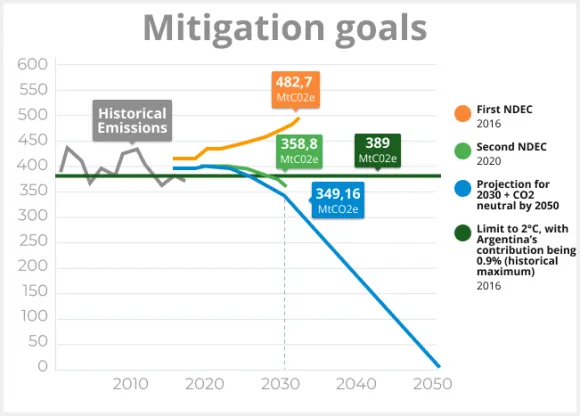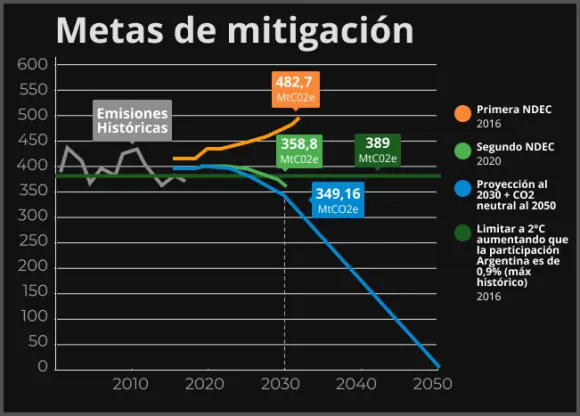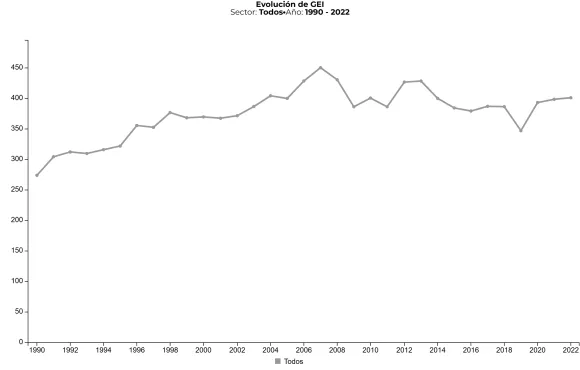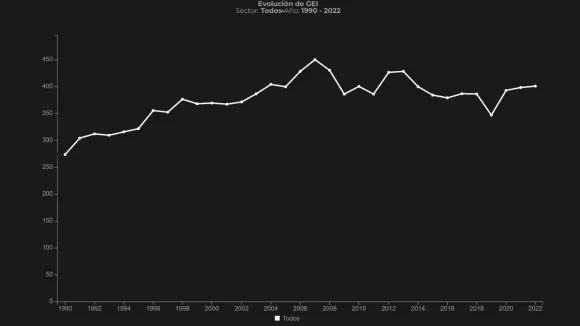| 20.1 By 2025, the working and socio-environmental conditions of 150,000 waste pickers nationwide are surveyed.
|
National Plan for Adaptation and Mitigation to Climate Change (PNAyMCC) [TS-02]
|
Early progress
|
|
| 20.2 By 2030, improve the conditions of 150,000 workers through the provision of personal protective equipment (PPE) and collection/processing equipment for recyclable materials.
|
National Plan for Adaptation and Mitigation to Climate Change (PNAyMCC)[TS-02]
|
Early progress
|
|
| 20.3 By 2030, integrate 50,000 urban waste pickers into municipal integrated solid waste management systems.
|
National Plan for Adaptation and Mitigation to Climate Change (PNAyMCC) [TS-02]
|
No information
|
|
| 20.4 By 2030, 30,000 waste pickers are sensitized and trained under the gender-based violence prevention program.
|
National Plan for Adaptation and Mitigation to Climate Change (PNAyMCC) [TS-02]
|
No progress
|
|
| 20.5 By 2030, 30,000 waste pickers and municipal actors are sensitized and trained in techniques and institutional strengthening for the development of Inclusive Integrated Solid Waste Management (GIRSU).
|
National Plan for Adaptation and Mitigation to Climate Change (PNAyMCC) [TS-02]
|
Moderate progress
|
|
| 20.6 By 2030, 1,000,000 citizens are sensitized and trained in Integrated Solid Waste Management (GIRSU).
|
National Plan for Adaptation and Mitigation to Climate Change (PNAyMCC)[TS-02]
|
No information
|
|
| 20.7 By 2030, build 25 recycling plants to consolidate Local Municipal Recycling Systems and improve the working conditions of urban waste pickers.
|
National Plan for Adaptation and Mitigation to Climate Change (PNAyMCC) TS-02]
|
Early progress
|
|
| 20.8 Six Regional Recycling Logistics Hubs were built to develop the recyclable-materials value chain by consolidating productive and marketing networks, promoting regional economies, import substitution, and value added by urban waste pickers.
|
National Plan for Adaptation and Mitigation to Climate Change (PNAyMCC) [TS-02]
|
No progress
|
|
| 21.1 Eradicate open dumpsites.By 2023, open dumpsites across the country are identified and georeferenced.
|
National Plan for Adaptation and Mitigation to Climate Change (PNAyMCC) [TS-07]
|
Early progress
|
|
| 21.2 Eradicate open dumpsites. By 2026, 100 municipalities strengthen their technical capacities for remediating micro-dumps through the acquisition of equipment.
|
National Plan for Adaptation and Mitigation to Climate Change (PNAyMCC) [TS-07]
|
Early progress
|
|
| 21.3 Eradicate open dumpsites. By 2027, 150 open dumpsites are closed through the construction of Environmental Centers.
|
National Plan for Adaptation and Mitigation to Climate Change (PNAyMCC) [TS-07]
|
Impossible to achieve
|
|
| 21.4 Eradicate open dumpsites. By 2030, 500 open dumpsites are closed through the construction of Environmental Centers.
|
National Plan for Adaptation and Mitigation to Climate Change [TS-07]
|
Impossible to achieve
|
|
| 21.5 Eradicate open dumpsites. Share of municipal solid waste (MSW) with adequate final disposal reaches 75% by 2025 and 90% by 2030, relative to total MSW generated nationwide.
|
State of the Environment Report 2020
|
Impossible to achieve
|
|











